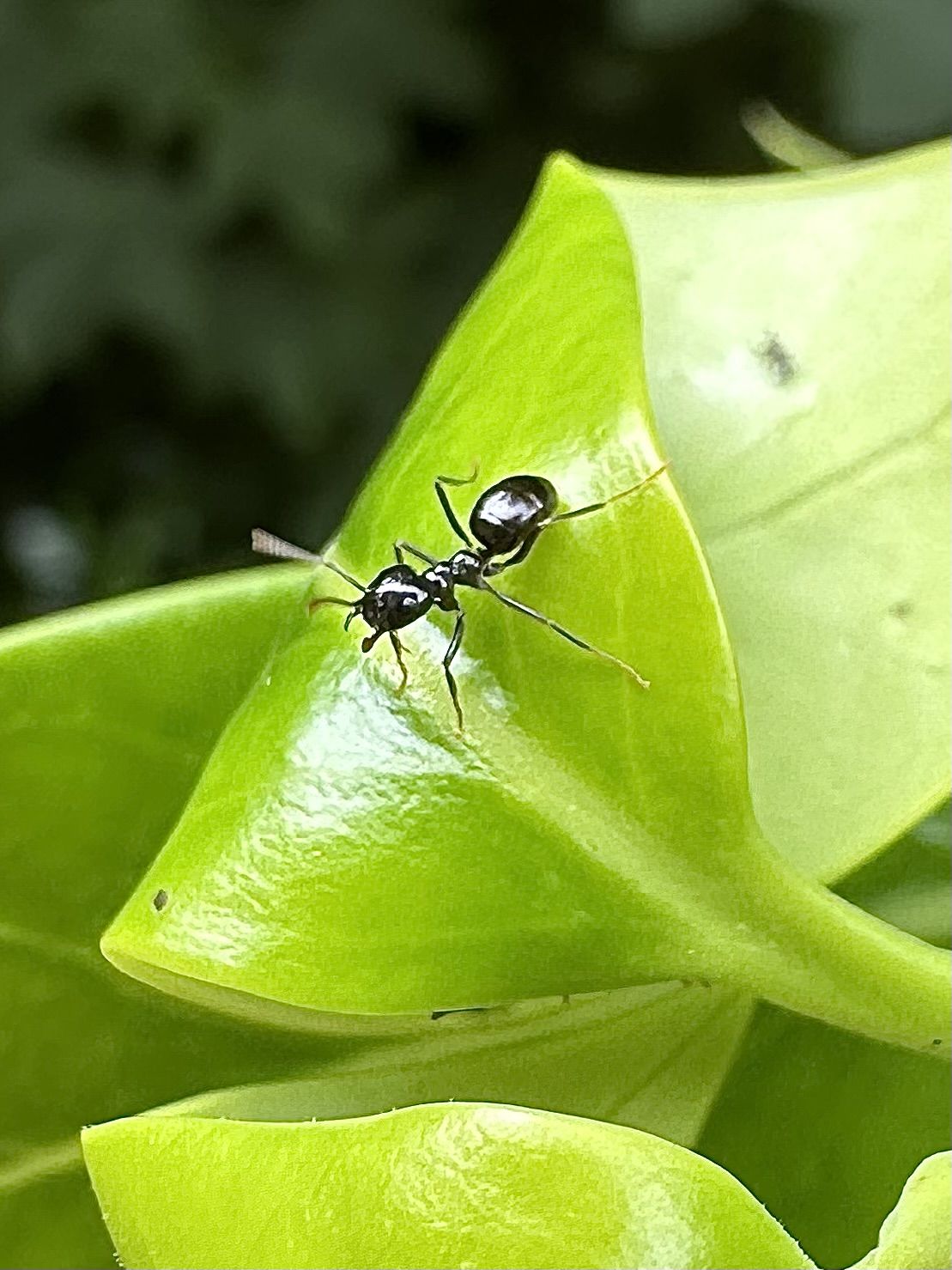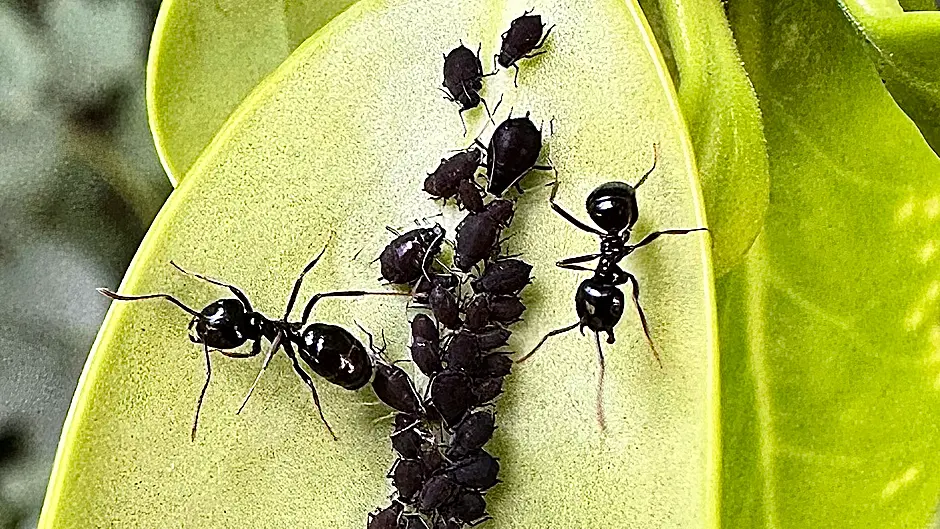BY ANNE HAIGH
JULY was an exhilarating month for our family’s wildlife observations. We continued monitoring the moths in our garden and uncovered several new species. Our rockpooling adventures led to the discovery of a sea slug rarely seen in Ireland. The highlight, however, came while the boys were playing in the Blackfield, Union Hall, when we stumbled upon a nationally rare ant.
Unsung heroes
Ants are keystone species in ecosystems, meaning their removal can cause dramatic changes or even collapse. Known as “ecosystem engineers,” ants are crucial for soil health, surpassing even earthworms in soil aeration. Ants belong to the same order of insects as bees, sawflies, and wasps: the Hymenoptera and they evolved from early wasps. It is thought that we have approximately 20 native ant species, but they are not a well-studied group.
Causing a stir
One of Ireland’s most common ants is the black garden ant (Lasius niger), it is the one you as more likely to see as it is often found in gardens and indoors. Despite its name, it is not truly black, but a dark chocolate brown. However, in the Blackfield community area last month, we found a rarer and truly black ant species on holly leaves. The ants, being so much more black in colour, looked distinctive and were interacting with aphids (greenfly), which prompted a quick photo on my iPhone. Afterward, I identified them as Lasius fuliginosus, or jet ants and posted them online. The online reaction was unexpected, revealing that we had discovered a rare ant. I was advised to contact Prof. John Breen, an expert in the field.
Ant expert
John, a retired associate professor from the University of Limerick, specialises in Irish social insects, including ants and bees. He confirmed our find and noted that jet ants are indeed rare. He first saw jet ants on Sherkin Island in 1971 and has encountered them only a few times since. He plans to visit West Cork and Union Hall this month to see the ants himself. As a new ant enthusiast, I look forward to learning from this renowned expert.
 Jet ants are set apart from other more common ants by a glossy jet black colour and a heart-shaped head.
Jet ants are set apart from other more common ants by a glossy jet black colour and a heart-shaped head.
More West Cork farmers
Jet ants differ from other more common ants by having a glossy, jet-black appearance like shiny black patent shoe leather and distinctive heart-shaped heads. They can also be told apart by their behaviour: they follow trails and walk slower, behind one another. If handled gently, these ants may also emit a pleasant smell which remains on your fingers—a detail we missed but hope to explore next time. They primarily feed on the honeydew produced by aphids but can occasionally be seen taking aphids or other dead insects back to their nests. Honeydew is a sugar-rich sticky liquid secreted as waste by aphids as a result of their feeding on plant sap. Ants are known to ‘farm’ aphids for this energy-giving liquid, milking it out of the aphids with their antennae.
Living life on the edge
Jet ants have complicated nesting requirements. The nest is usually made in tree stumps and built from chewed wood and saliva. However, a likely reason for their rarity in Ireland is their specific requirements and reliance on other ant species to start a colony. Newly mated queens cannot start their own nest. Instead, they infiltrate the nest of a species of yellow ant, kill the existing queen, and convince the workers to raise their young. This process is known as ‘temporary social parasitism’.
The yellow ants, Lasius umbratus or Lasius mixtus, are rare in Ireland and themselves need to infiltrate the nests of yellow meadow ants (Lasius flavus) or black garden ants (Lasius niger) to make their own nests. This life cycle is very complicated and precarious and makes the presence of jet ants in Union Hall all the more important and interesting.
Flying ant day
While jet ants have a complex lifecycle, more common ants like the black garden ant have a simpler one. During warm, humid summer conditions, sexually mature queens and males grow wings and take to the air en masse to mate—a phenomenon known as the nuptial flight. This mass flight helps in dispersal, with mated queens landing, chewing their own wings off and establishing new colonies.
This phenomenon, often referred to as 'flying ant day,' can be startling as ants appear in large numbers. Although it seems to happen all at once, the mating occurs over several days, usually between late July and early August. Watch for them!
Amazing ants
Ants have colonised every continent except Antarctica, and their total weight is believed to surpass that of all the world’s birds and mammals combined. As one of the world’s strongest animals they are known to be able to lift and carry up to 50 times their own body weight. They play vital roles in seed dispersal, food chain balance, habitat creation and soil health. Despite being overlooked, ants are crucial to ecosystems. Discovering a rare black ant in the Blackfield was a chance to reflect on their importance. If you spot jet ants, you can share a photograph and location with Prof. John Breen at [email protected]. Supporting the study of Irish ants helps understand the health and function of our environment.










